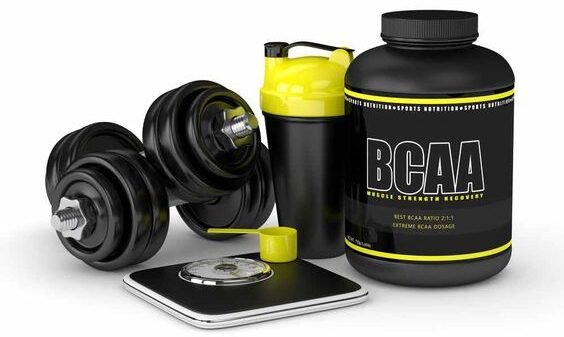Women have long-favored chemical hair straighteners for transforming curly or wavy hair into smooth, sleek tresses. However, growing scientific evidence suggests that these chemical treatments may pose significant health risks, particularly for women of color.
These solutions originated in the early 20th century, with African-American women using lye relaxers for straighter hair. Today, they have become a ubiquitous part of hair care routines for many women, particularly those of African descent.
In this article, we explore the complex link between hair straighteners and women’s health, revealing potential hazards associated with their usage.
The Chemical Cocktail in Hair Straighteners
The FDA warns that many hair-smoothing products release formaldehyde gas, a recognized human carcinogen, during straightening. According to the FDA, formaldehyde exposure during hair treatments can result in both short- and long-term health effects. These health concerns highlight the importance of understanding the potential risks of using such hair products.
At the heart of chemical hair straighteners lies a complex amalgamation of ingredients designed to alter the hair’s structure. Common components include formaldehyde, a known carcinogen, and other chemicals like thioglycolic acid, ammonium hydroxide, and sodium hydroxide.
These potent substances work in tandem to break down the hair’s natural bonds, allowing for the reshaping of its structure.
This revelation emphasizes the imperative for increased awareness concerning the potential health risks linked to routine exposure to chemical cocktails.
Feminine Beauty Standards and Hair Straightening
Pursuing straight hair has been deeply intertwined with feminine beauty standards for centuries. Eurocentric beauty standards favor long, straight hair, stigmatizing curly or textured hair as unprofessional or unattractive in societal perceptions. Ingrained beauty standards shape women’s hair care, prompting the widespread embrace of chemical hair straightening to meet societal expectations.
The pressure to conform to straight hair ideals has been particularly intense for women of color. Their naturally curly or textured hair has often been deemed less desirable, leading to feelings of inadequacy and self-consciousness. It has fueled the widespread use of chemical hair straighteners among women of color.
CNBC reports that the National Institute of Environmental Health Sciences (NIEHS) found that 60% of women using hair straightening products identify as Black.
Health Risks Specific to Women
While the popularity of chemical hair straighteners transcends gender, women are disproportionately affected by the potential health risks associated with these treatments. Women’s intricate physiology, marked by hormonal fluctuations, heightens vulnerability to adverse effects from chemicals in hair straightening products.
Women are at risk for several health conditions that are specific to their gender. These conditions can range from mild to severe and affect women of all ages. Common health risks for women encompass breast and ovarian cancers, heart disease, stroke, and uterine cancer, emphasizing comprehensive health awareness.
Recognizing nuanced health risks for women emphasizes the need to reassess beauty practices for a harmonious blend of aesthetics and well-being.
Breast and Uterine Cancer Risk and Chemical Exposure
The link between chemical hair straighteners and health hazards, especially breast and uterine cancer, is under recent scrutiny. Growing evidence indicates a connection between prolonged exposure to hair straightening chemicals and elevated cancer risks. This revelation emphasizes the urgency of understanding and addressing potential health risks associated with routine chemical-based hair product use.
CNN reports on the link between hair straightening products and cancer risk, with new findings highlighting uterine cancer concerns in women. Earlier studies linked hair straightening chemicals to hormone-related cancers, such as breast and ovarian cancers. Recent research now establishes a connection between the use of these products and an elevated risk of uterine cancer.
Studies suggest that formaldehyde in these products may increase the risk of developing breast and uterine cancer. The gravity of these findings has spurred legal action against manufacturers of these products.
Individuals with health conditions believe that the chemicals in these products have been the reason behind the mishap. The hair straightener lawsuit alleges that the manufacturers knew about the risks of their products but neglected their responsibility to warn consumers.
Potential damages in this lawsuit, according to TorHoerman Law, cover medical bills and lost wages. Acknowledging lost quality of life, damages consider loss of consortium and may extend to pain, suffering, and emotional distress.
Hair Straightening and Dermatological Concerns
Chemical hair straighteners have become a popular choice for women seeking to achieve a straight and sleek look. However, these products often contain a mix of chemicals that can be harmful to your health, particularly your skin. They often contain harsh substances like sodium hydroxide and ammonium hydroxide, notorious for their potential to irritate the scalp and skin.
Hair straightening solutions pose dermatological concerns like scalp irritation, often resulting in redness, itching, and burning. Allergic reactions may occur, causing severe symptoms such as swelling and blistering. Also, these products can lead to hair loss by damaging follicles, causing breakage, split ends, and even permanent loss in some cases.
The National Institute of Health notes associations between hair relaxers and scalp issues, including eczema, desquamation, burns, and inflammation. Studies observed hair loss, shaft damage, color alteration, and changes in amino acid composition with hair relaxer use. Findings, however, vary across studies, indicating the need for comprehensive research to understand the broader implications.
Dermatological issues, from mild irritation to severe disorders, underscore the necessity for balanced discussions on beauty practices. In the quest for perfect aesthetics, recognizing the impact on dermatological health is pivotal. This prompts a reconsideration of beauty standards that values both style and the well-being of the skin and hair.
Reproductive Health Considerations
While the dermatological risks of chemical hair straighteners are well-documented, there is growing concern about their potential impact on reproductive health. Several studies have linked the use of these solutions to an increased risk of certain reproductive health problems.
Extended exposure to chemicals in these products, especially formaldehyde, is linked to menstrual cycle disruptions and heightened fertility-related risks.
Also, some chemicals in hair products, such as phthalates and parabens, are known endocrine disruptors. Endocrine disruptors can cause hormonal imbalances, contributing to reproductive issues such as irregular menstruation, infertility, and premature birth.
Alternatives and Safer Practices
Amid health concerns, exploring alternatives and adopting safer practices in the domain of chemical hair straighteners becomes a crucial dialogue. Opt for natural textures, heat-free styling, and sulfate-free botanical products for a style that prioritizes both aesthetics and well-being. Studies have shown that minimizing the use of hair solutions can contribute to healthier hair and scalp conditions.
Consumer awareness and demand for safer beauty practices are driving the market towards innovative, less harmful solutions. This shift empowers women to redefine beauty, urging the industry to prioritize formulations that enhance aesthetics without compromising health.
To Wrap it Up
In the pursuit of beauty, the exploration of how chemical hair straighteners impact women’s health reveals a complex tapestry of concerns. Amidst beauty industry revelations, consumers must prioritize informed choices that balance aesthetic aspirations with long-term well-being considerations.
The exploration underscores the necessity for heightened awareness, regulatory scrutiny, and a cultural shift toward embracing diverse beauty standards. Reflecting on beauty rituals and health outcomes, the path forward involves fostering a balance that celebrates self-expression. It should prioritize well-being without compromising the inherent beauty of holistic health.





























































